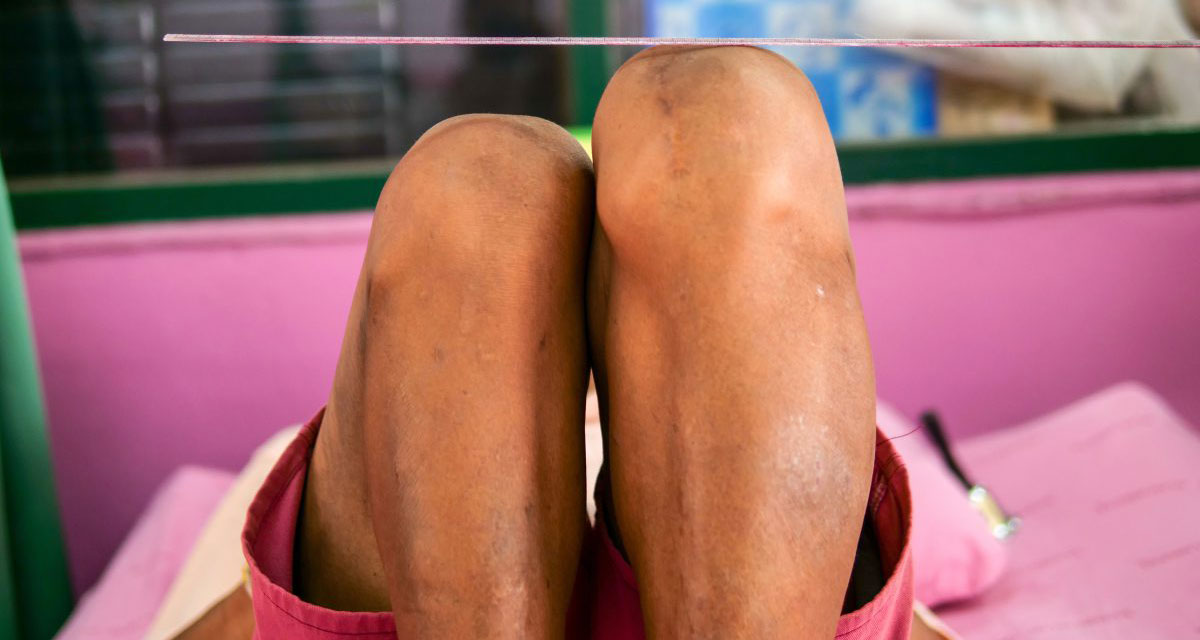The human skeleton consists of an intricate architecture of bones – a living tissue that is perpetually undergoing transformation throughout our lives. The most significant portion of bone development, repair, and remodeling occurs during a person’s growth period in their youth and adolescence, contributing to our adult body structure. However, certain factors can disrupt this process, leading to skeletal issues like limb deformity.[1]
Deformities can arise from genetic conditions, trauma, nutritional deficiencies,
hormonal imbalances, or other underlying causes.
Biology and Bone Formation
Bone formation, or ossification, is the process of creating, remodeling, and maturing bone tissue. Growth factors, hormones, and mechanical forces regulate ossification.
– In intramembranous ossification, mesenchymal cells differentiate into osteoblasts, which secrete collagen and other matrix proteins that mineralize and form the long bones.
– In endochondral ossification, cartilage tissue is transformed into bone through the deposition of organic and inorganic bone material on the cartilage surface to form flat bones.
Understanding bone formation is crucial in orthopedics, regenerative medicine, and developing treatments for bone disorders and limb defects.[2]
Development of Deformities
Bone deformities can occur due to congenital conditions, childhood abnormalities, deficiencies, pathologies, or improper healing of fractures.
There are four common ways in which bone deformities appear:
– Angulation (a bend in the bone)
– Rotation or torsion (a twist in the bone)
– Translation or displacement (a shift in bone position after a fracture or osteotomy)
– Limb length discrepancy (a difference in bone length compared to the opposite side)
Limb deformity encompasses a range of orthopedic issues that affect the arms or legs (limbs), either in part or the entire limb.[3]
Limb defects can be of the following types:
- Congenital abnormalities are birth defects that can be caused by chromosomal abnormalities or medications taken during pregnancy.
Examples:
– Blount’s disease
– Clubfoot
– Rickets
– Genu varum
– Genu valgum
– Arthrogryposis Multiplex Congenita
– Leg length discrepancy
– Osteogenesis imperfecta
– Perthes disease
- Acquired limb development issues can result from nutritional deficiencies, adult trauma, pathologies, or fractures that didn’t heal correctly during childhood, which affect limb development and structure.
Examples:
– Rickets and osteomalacia due to nutritional deficiencies
– Traumatic injuries
– Cerebral palsy
– Rheumatoid arthritis[4]
For more information, refer here.
How is a Limb Deformity Corrected?
– Correction of a limb deformity involves various approaches, depending on the specific condition.
– Nonsurgical interventions may include the use of braces, splints, or orthotic devices to provide support and alignment, as well as to promote proper bone growth.
– Physical therapy exercises can help improve strength, flexibility, and function.
– Surgical procedures may be required for severe or complex deformities. Surgical interventions may include osteotomies (cutting and realigning bones), bone grafting, limb lengthening or shortening procedures, or joint reconstruction.
The treatment plan is tailored to each patient’s needs, with the goal of improving limb alignment, function, and overall quality of life.[5],[6]
There is no specific way to avoid a limb deformity; thus, early detection and intervention are key to overall skeletal health and agility. Certain congenital limb defects can, however, be avoided by ensuring the mother’s vitamin status and preventing the use of certain drugs, alcohol, and tobacco.
References
- Ledesma-Medina J, Newman B, Oh KS. Disturbances of bone growth and development. Radiol Clin North Am. 1988 Mar;26(2):441-63.
- Price JS, Oyajobi BO, Russell RG. The cell biology of bone growth. Eur J Clin Nutr. 1994 Feb;48 Suppl 1:S131-49.
- Wolpert L. Mechanisms of limb development and malformation. Br Med Bull. 1976 Jan;32(1):65-70.
- Gold NB, Westgate MN, Holmes LB. Anatomic and etiological classification of congenital limb deficiencies. Am J Med Genet A. 2011 Jun;155A(6):1225-35.
- Paley D. Correction of limb deformities in the 21st century. J Pediatr Orthop. 2000 May-Jun;20(3):279-81.
- Hampton MJ, Weston-Simmons S, Giles SN, Fernandes JA. Deformity Correction, Surgical Stabilisation and Limb Length Equalisation in Patients with Fibrous Dysplasia: A 20-year Experience. Strategies Trauma Limb Reconstr. 2021 Jan-Apr;16(1):41-45.







